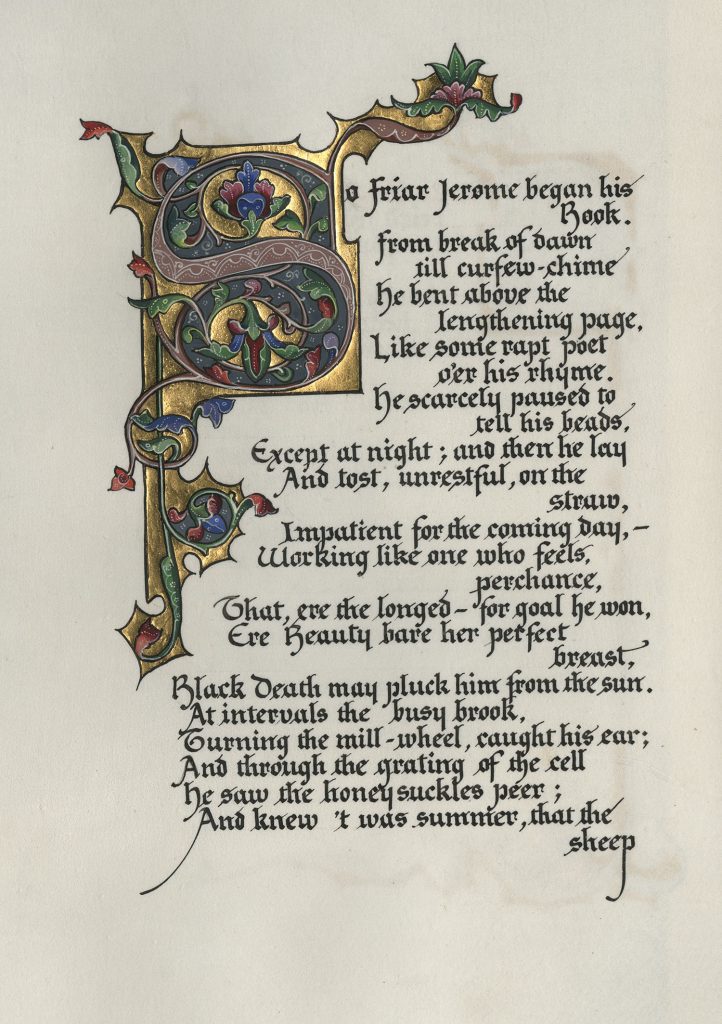Special Effects in Gold
Through the centuries artists and artisans have used gold for decorative purposes in creating jewelry, timepieces, and books of exquisite craftsmanship and beauty.
Friar Jerome’s Beautiful Book: A.D. 1200
Thomas Bailey Aldrich
London: Alberto Sangorski, 1917
Nettie Hale Rand Fine Bindings and Printing
Vanderbilt University Special Collections
The richly illuminated vellum pages of Friar Jerome’s Beautiful Book feature raised gilding which is achieved by putting gold leaf on a gesso base with a burnished finish. This one-of-a-kind book was produced in America in the early part of the 20th century.

The Sonnets of Shakespeare
William Shakespeare
London: Chiswick Press, 1928
Nettie Hale Rand Fine Bindings and Printing
Vanderbilt University Special Collections
Another example of book art using gold is the exterior cover design of The Sonnets of Shakespeare. The cover of rose morocco leather is tooled and decorated in gold in an armorial shield and eagle design set within a leaf and tendril pattern and bordered by gilded double fillets.
![[Watch Case 14 Karat Gold Engraved with the Initials University of Nashville and Wickliffe Rose]](https://exhibitions.library.vanderbilt.edu/silver-and-gold/wp-content/uploads/sites/73/2023/10/3K0A4470-1500-866x1024.jpg)
[Watch Case 14 Karat Gold Engraved with the Initials University of Nashville and Wickliffe Rose]
Unknown goldsmith, early 20th century
Vanderbilt University Memorabilia Collection
Gold does not rust or decay and remains lustrous, and so is a valuable metal for making timepieces. The gold watch case on display here is engraved with the initials of Wickliffe Rose and the University of Nashville. Rose served as professor and dean there from 1892–1907.


